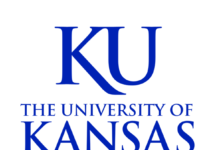Ag producers from two states come together for information on how to manage lands
ASHLAND, Kan. – Late spring and early season rains are contributing to what agricultural producers and extension specialists are calling a steady recovery for grasslands ravaged by wildfires earlier this year in southwest Kansas and northwest Oklahoma.
In early March, fires in those regions took out an estimated 660,000 acres of pasture, much of which was used to graze cattle.
“This part of the country has never experienced anything like this before,” said Ashland cattleman Matt Ast.
Ast was one of several producers from Kansas and Oklahoma who recently attended a range management meeting at the Snake Creek Ranch, which is located just a little more than 200 yards from the Kansas-Oklahoma border.
The meeting was co-hosted by extension services at Kansas State University and Oklahoma State University.
“These fires don’t respect state lines,” said Laura Goodman, a range management specialist with Oklahoma State University extension. “Our plant communities are growing across these different states. So it doesn’t make sense to have only Kansas or Oklahoma put these on, but really to come together to see what’s working in different areas and what we need to learn to handle situations where rangelands have experienced these wildfires.”
Rancher Mark Luckie, owner of Snake Creek Ranch, had 16,000 acres burned out by the wind-whipped wildfire, which touched parts of 21 Kansas counties on March 6 and 7.
“We had 12 ½ miles of fence to replace, and approximately 80,000 feet of major repairs (to fence),” Luckie said. “We have two fencing crews running right now. It’s going to be another 60 days until we’re back to where we were.”
But the late May meeting in Ashland helped producers understand that better days are ahead.
“We’ve had such a fantastic spring in terms of rainfall in both Kansas and Oklahoma…that I think these plants are going to recover very well,” Goodman said. “We’ll see how the rest of the summer goes in terms of rainfall, but so far we’re doing fantastic. I’m looking forward to seeing what these rangelands will look like in September and October.”
Walt Fick, a range management specialist with K-State Research and Extension, said that most areas he drove through seemed to have sufficient forage in the pastures to begin putting cattle on areas that burned.
“The grass is starting and as long as we have some warm, sunny days, those pastures can be grazed,” Fick said. “If it continues to rain, they can still have a fairly good production year.”
Perennial grasses typically benefit from being burned, so long as there is adequate moisture to follow. But the intensity of a wildfire always makes recovery a little tougher, according to Fick.
“History has told us that following wildfires, we might see some reduced forage production, but I think that’s still yet to be determined based on how much rainfall we get in the early summer period,” he said. “If it turns out dry, then that situation may become more critical to where we will need to back off on our stocking rates.”
Ast said that he and the several dozen producers who attended the meeting at Snake Creek Ranch needed the information provided by the two extension services.
“We can’t go on a whim and flip a coin and do it the way we want to,” he said. “This is a serious deal. If people want to be sustainable on their ranching operations, we need to listen to this. A lot of the ranches here are third, fourth, fifth generation ranches…they’ve seen hard times but they haven’t seen a fire like this where everything was destroyed.
“Knowing how to properly manage the pasture right now makes a world of difference. It’s the only thing that keeps us going.”



